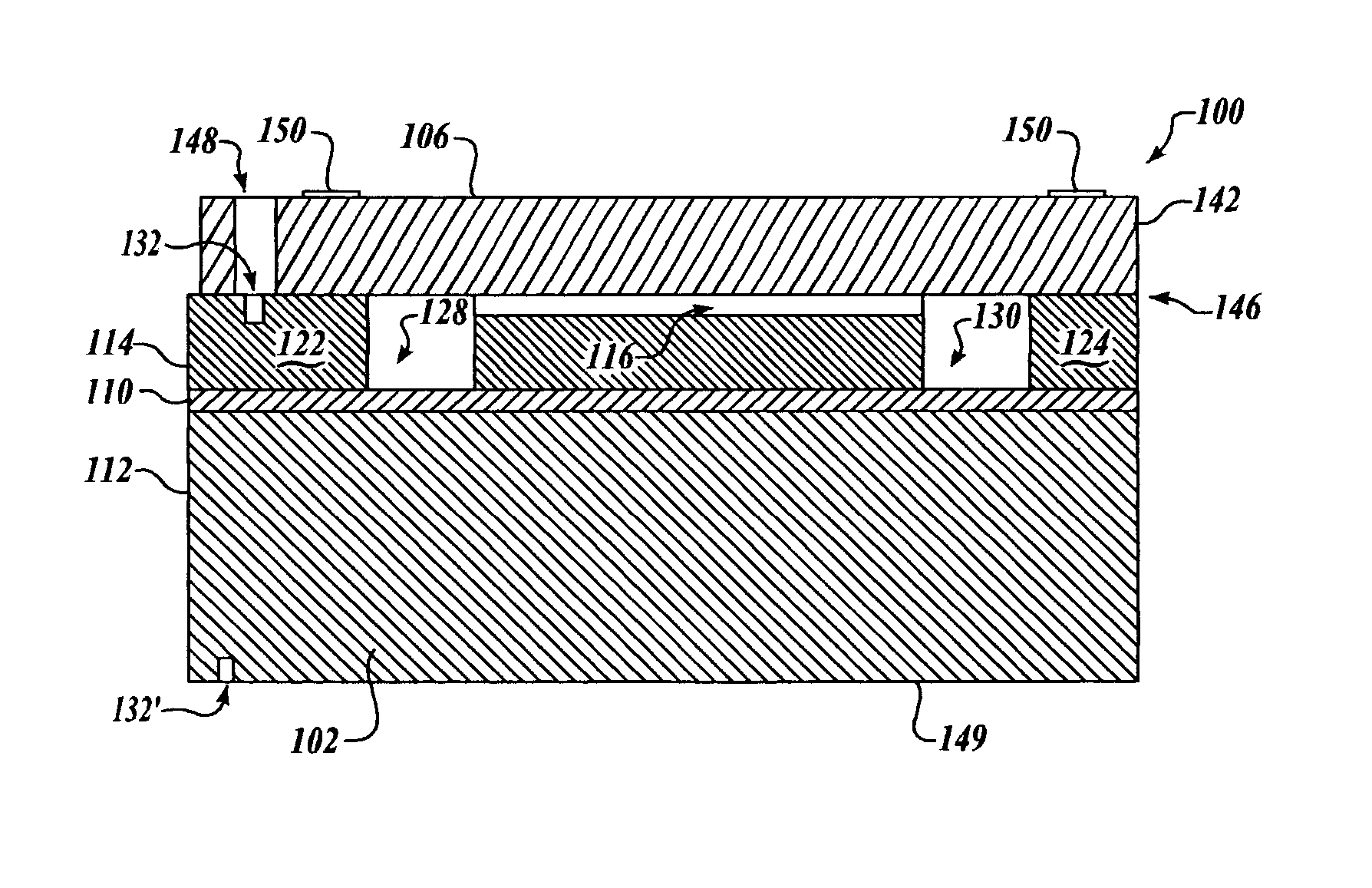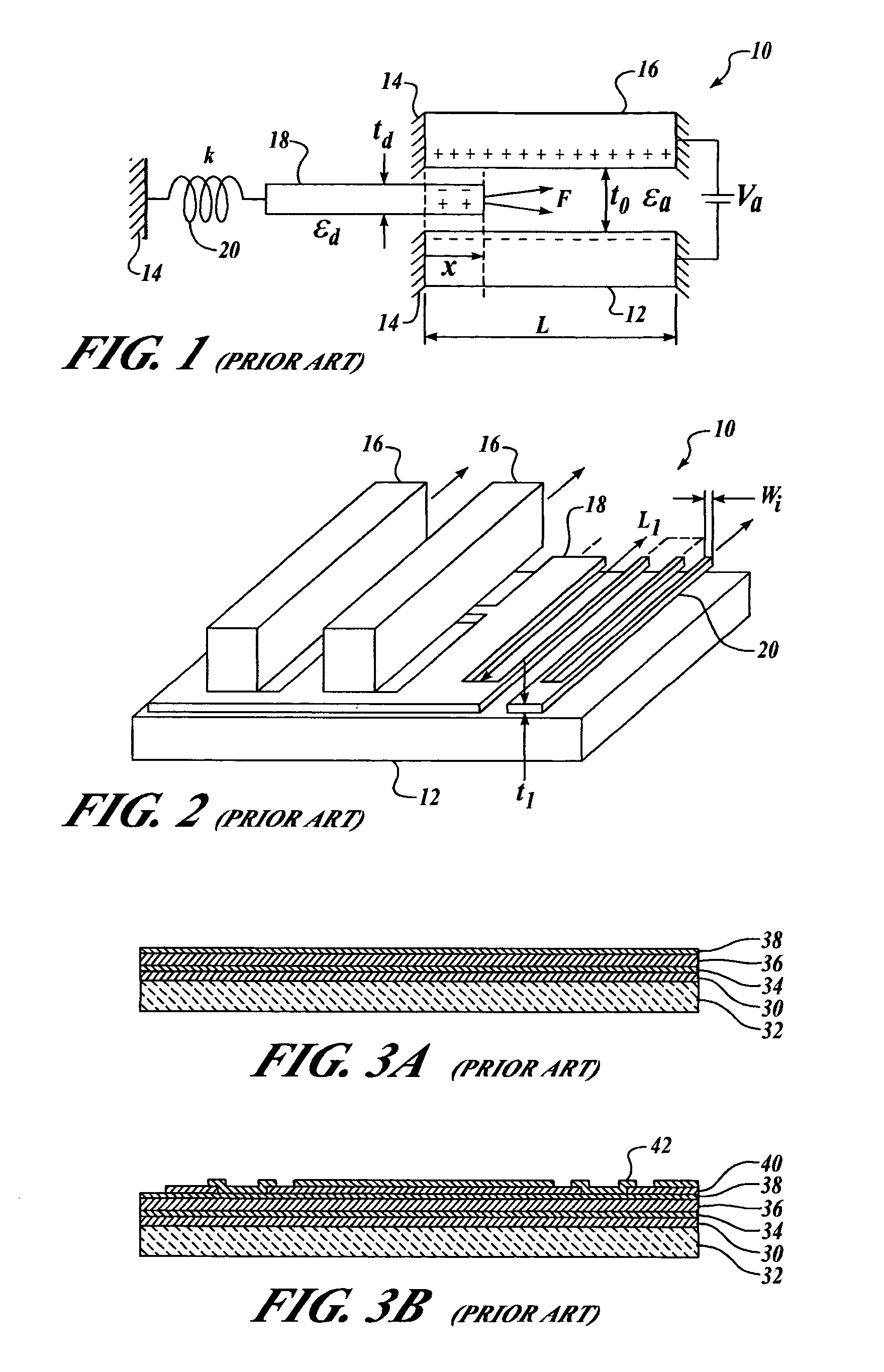Method of manufacturing vibrating micromechanical structures
a micromechanical structure and vibrating technology, applied in the direction of microstructural system formation, electrical transducer, conductive pattern formation, etc., can solve the problems of low yield, low yield, and difficult control of intrinsic stresses and stress gradients
- Summary
- Abstract
- Description
- Claims
- Application Information
AI Technical Summary
Benefits of technology
Problems solved by technology
Method used
Image
Examples
Embodiment Construction
[0051] In the Figures, like numerals indicate like elements.
[0052] The present invention is an apparatus and method for fabrication of micromechanical resonators using a two-wafer process, including a Silicon-on-Insulator (SOI) base wafer and a SOI resonator wafer, or alternatively an insulating base wafer and a single crystal silicon (SCS) or SOI resonator wafer.
[0053]FIG. 7 is a cross-sectional view that illustrates the architecture of a micromechanical resonator device 100 of the present invention formed of a SOI base plate 102 formed in a SOI base wafer 104 and a single crystal silicon micromechanical resonator 106 formed in a SOI resonator wafer 108 (shown in subsequent Figures and described below). The SOI base and resonator wafers are a type that is generally commercially available. The SOI base wafer element 104 includes a buried dielectric layer 110 having a typical thickness of from about 0.5 to 2.0 microns that is sandwiched between relatively thicker “handle” and “acti...
PUM
| Property | Measurement | Unit |
|---|---|---|
| thickness | aaaaa | aaaaa |
| thickness | aaaaa | aaaaa |
| dielectric | aaaaa | aaaaa |
Abstract
Description
Claims
Application Information
 Login to View More
Login to View More - R&D
- Intellectual Property
- Life Sciences
- Materials
- Tech Scout
- Unparalleled Data Quality
- Higher Quality Content
- 60% Fewer Hallucinations
Browse by: Latest US Patents, China's latest patents, Technical Efficacy Thesaurus, Application Domain, Technology Topic, Popular Technical Reports.
© 2025 PatSnap. All rights reserved.Legal|Privacy policy|Modern Slavery Act Transparency Statement|Sitemap|About US| Contact US: help@patsnap.com



